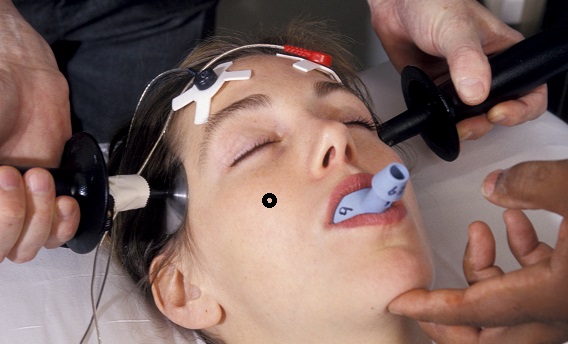What is electroconvulsive therapy ECT and how is it used to treat depression?
Electroconvulsive therapy (ECT) stands as a potent and proven psychiatric remedy employed to mitigate severe depression refractory to other interventions.
Despite its contentious reputation, ECT remains a valuable recourse for individuals grappling with incapacitating depression symptoms.
This article will delve into the rudiments of electroconvulsive therapy, its procedural aspects, mechanisms of action, and its efficacy in managing depression.
A Grasp of Electroconvulsive Therapy
Electroconvulsive therapy encompasses the controlled induction of a seizure within a patient’s brain through the dispensation of electrical currents.
Although the precise mechanisms underlying its curative effects aren’t fully comprehended, ECT is posited to impact the neurochemical and neuroplastic processes in the brain, resulting in symptom amelioration.
Generally, ECT is executed under the shroud of general anesthesia to guarantee patient ease and security.
Procedural Aspects and Implementation of ECT
Preliminary Assessment: Preceding ECT, an exhaustive assessment is undertaken, encompassing medical, psychiatric, and physical evaluations.
Scrutiny of the patient’s medical history, existing medications, and possible contraindications is carried out meticulously.
Anesthesia and Muscle Relaxation: Prior to the procedure, the patient receives anesthesia to prompt unconsciousness and muscle relaxants to avert convulsions from inflicting bodily harm. Throughout the procedure, vital signs and oxygen levels are vigilantly monitored.
Electrical Stimulation: Electrodes are methodically positioned on the patient’s scalp, and a minor electric current is administered to initiate a controlled seizure lasting a brief interval, usually 30 to 60 seconds. The process is devoid of pain, as the patient is anesthetized.
Recovery and Aftercare: Post-procedure, the patient is relocated to a recovery section where they regain consciousness gradually.
Vital signs and cognitive function are observed, and some transient bewilderment or memory lapse may be encountered by the patient.
III. Efficacy in Addressing Depression
ECT is predominantly employed in cases of acute depression resistant to alternative treatments or in situations necessitating prompt relief.
It has exhibited impressive efficacy in treating diverse depression variants, encompassing major depressive disorder, bipolar depression, and depression unresponsive to conventional interventions.
Prompt Symptomatic Relief: An eminent ECT advantage lies in its rapid alleviation of severe depressive symptoms.
Numerous patients report notable enhancements in mood, sleep, appetite, and overall functioning within a handful of sessions.
Management of Treatment-Resistant Depression: ECT holds notable sway for individuals unresponsive to other interventions, spanning medications and psychotherapy.
It ranks as the gold standard for treatment-resistant depression, boasting response rates spanning 60% to 80%.
Safety and Tolerability: ECT generally enjoys a safe and well-tolerated status, showcasing minimal side effects.
Prevalent side effects encompass ephemeral confusion, headaches, and transient memory loss. These side effects are typically transient, subsiding within days or weeks after the treatment.
Sustained Efficacy: For certain individuals, recurrent maintenance ECT might be imperative to uphold treatment benefits.
This regimen involves intermittent ECT sessions to forestall relapse and address recurrent depressive symptoms.
Navigating Misgivings and Disputes
ECT has long been shadowed by stigma and misconceptions, mainly attributable to historical portrayals and antiquated practices.
Yet, contemporary ECT procedures are executed with meticulous concern for patient welfare and comfort.
The strides made in anesthesia, electrode placement techniques, and monitoring have significantly mitigated potential hazards.
Ongoing research and progress in the domain strive to further refine ECT protocols. This includes the application of unilateral electrode placement and the formulation of newer stimulation methodologies, like magnetic seizure therapy (MST) and electroconvulsive therapy under general anesthesia (ECTA). These endeavors aspire to diminish side effects while upholding therapeutic efficacy.
Amid its efficacy, certain reservations encircle ECT, encompassing potential cognitive side effects.
While brief memory loss and bewilderment are common immediately post-ECT, most individuals recover their cognitive functions within weeks or months.
Yet, isolated instances of enduring memory loss have been chronicled, and this jeopardy warrants deliberation and discourse with healthcare professionals.
Crucially, ECT is generally an endmost recourse for severe depression, executed under adept supervision in specialized clinical settings.
The decision to undergo ECT is typically a collaborative process, involving the patient, their family, and their healthcare team, engrossed in weighing potential gains versus potential perils.
Closure
Electroconvulsive therapy (ECT) persists as a potent and effectual remedy for individuals shackled by severe depression, primarily when other interventions have faltered.
Bestowed with the capacity to rapidly mitigate symptoms and furnish relief, ECT extends hope to those ensnared in the clutches of incapacitating depression.
Notwithstanding enduring concerns and misconceptions enshrouding ECT, advancements in the field have propelled safety to the fore and attenuated potential hazards.
Through meticulous evaluation and apt administration, ECT continues to stand as an invaluable instrument in grappling with depression, ushering individuals toward regaining their quality of life and attaining enduring recovery.

